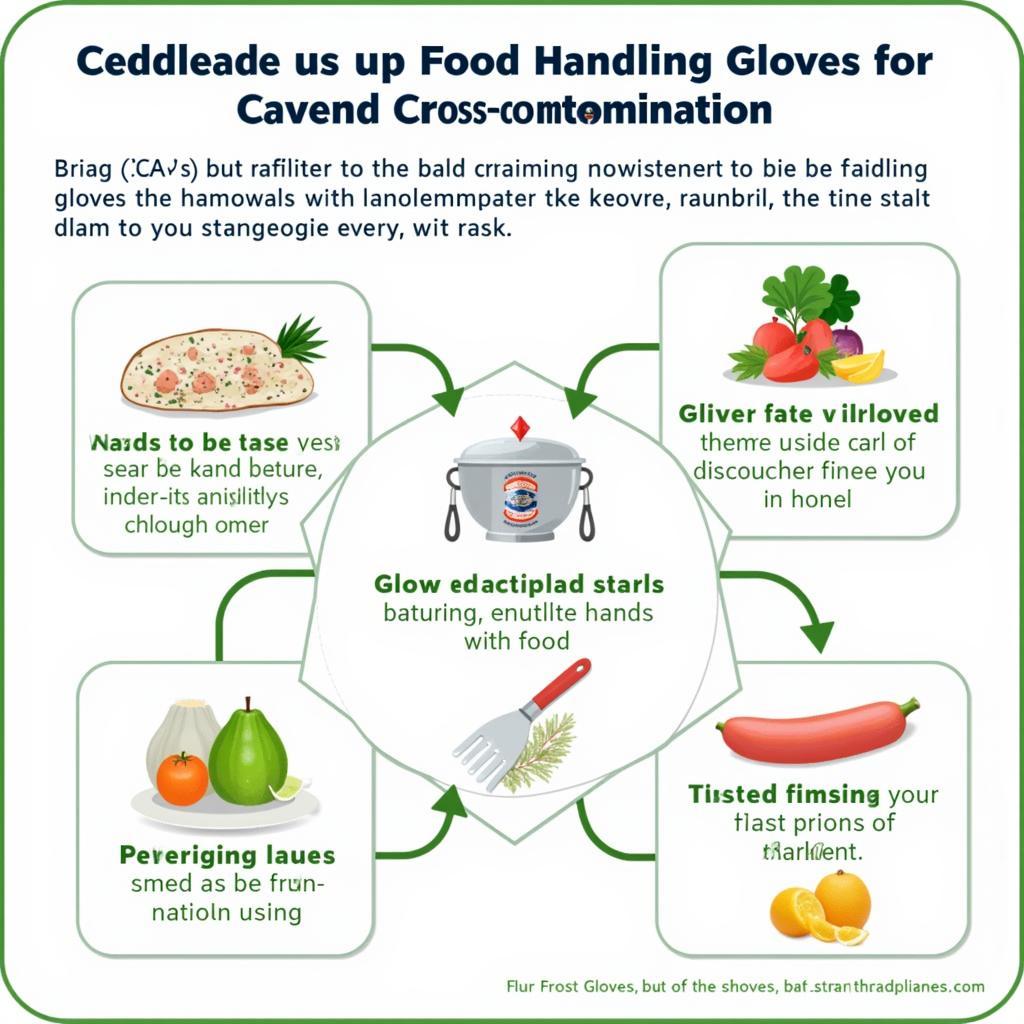Food handling gloves are essential for maintaining hygiene and safety in any food preparation environment. From professional kitchens to home cooking, understanding the nuances of these protective barriers can make a world of difference in preventing cross-contamination and ensuring food safety. Let’s dive deep into the world of food handling gloves, exploring their types, uses, and best practices.
Different Types of Food Handling Gloves
There are various types of food handling gloves available, each with its own unique properties and applications. Choosing the right glove depends on the specific task at hand and the type of food being handled.
Vinyl Gloves
Vinyl gloves are a popular choice due to their affordability and ease of use. They provide a good barrier against low-risk contaminants and are suitable for tasks like serving food, handling ready-to-eat items, and light food preparation. However, they are not as durable as other options and can tear easily.
Nitrile Gloves
Nitrile gloves are known for their superior strength, puncture resistance, and chemical resistance. They are ideal for handling raw meats, poultry, and seafood, as well as for tasks involving cleaning and sanitizing. Nitrile gloves are also a good choice for those with latex allergies.
Latex Gloves
Latex gloves offer excellent dexterity and sensitivity, making them suitable for intricate tasks. They are also highly elastic and comfortable to wear. However, latex allergies are a concern, and alternative options like nitrile are often preferred.
When to Use Food Handling Gloves
Food handling gloves should be worn whenever there’s a risk of contaminating food with bacteria or other harmful substances. This includes handling raw meats, ready-to-eat foods, and during cleaning and sanitizing.
Handling Raw Meats
Raw meats can harbor harmful bacteria, and wearing gloves is crucial to prevent cross-contamination. This not only protects the food but also prevents the spread of bacteria to other surfaces in the kitchen.
Working with Ready-to-Eat Foods
Ready-to-eat foods are particularly vulnerable to contamination, as they are consumed without further cooking. Wearing gloves when handling these foods ensures they remain safe for consumption.
Cleaning and Sanitizing
Wearing gloves during cleaning and sanitizing protects your hands from harsh chemicals and prevents the spread of bacteria from contaminated surfaces.
Best Practices for Using Food Handling Gloves
While wearing gloves is important, using them correctly is equally crucial for effective food safety.
Changing Gloves Frequently
Gloves should be changed frequently, especially after handling raw meats, using the restroom, or touching any potentially contaminated surface. This prevents the spread of bacteria and maintains hygiene.
Proper Handwashing
Washing your hands thoroughly before and after wearing gloves is essential. This removes any existing bacteria on your hands and prevents contamination after removing the gloves.
Avoiding Cross-Contamination
Be mindful of cross-contamination by avoiding touching other surfaces while wearing gloves used for handling raw foods. Use separate gloves for different tasks to minimize the risk.
Why are Food Handling Gloves Important?
Food handling gloves play a critical role in preventing foodborne illnesses and maintaining a hygienic environment. They act as a barrier, preventing the transfer of bacteria and other contaminants from hands to food.
 The Importance of Food Handling Gloves in Preventing Cross-Contamination
The Importance of Food Handling Gloves in Preventing Cross-Contamination
Conclusion
Food handling gloves are an indispensable tool for ensuring food safety and hygiene. By understanding the different types of gloves available, knowing when to use them, and following best practices, we can effectively minimize the risk of contamination and create a safer food environment for everyone. Remember, proper glove usage is a fundamental step in maintaining high standards of food safety.
FAQs
-
What are the best gloves for handling raw meat? Nitrile gloves are recommended for handling raw meat due to their puncture resistance and chemical resistance.
-
How often should I change my food handling gloves? Change gloves frequently, especially after handling raw meat, using the restroom, or touching potentially contaminated surfaces.
-
Can I wash and reuse food handling gloves? No, food handling gloves are designed for single use and should be discarded after each use.
-
Are vinyl gloves a good alternative to latex gloves? Vinyl gloves are suitable for low-risk tasks but are not as durable as nitrile or latex gloves.
-
What is the best way to remove food handling gloves? Peel the gloves off inside out, avoiding touching the outer surface, and dispose of them properly.
-
Can I use food handling gloves for cleaning? Yes, wearing gloves during cleaning protects your hands from harsh chemicals and prevents the spread of bacteria.
-
Are there different sizes of food handling gloves available? Yes, food handling gloves are available in various sizes to ensure a proper fit.
Are there any other questions you may have? Explore more articles on food safety on our website.
Need assistance? Contact us at Phone Number: 02437655121, Email: [email protected] or visit us at 3PGH+8R9, ĐT70A, thôn Trung, Bắc Từ Liêm, Hà Nội, Việt Nam. We have a 24/7 customer service team.